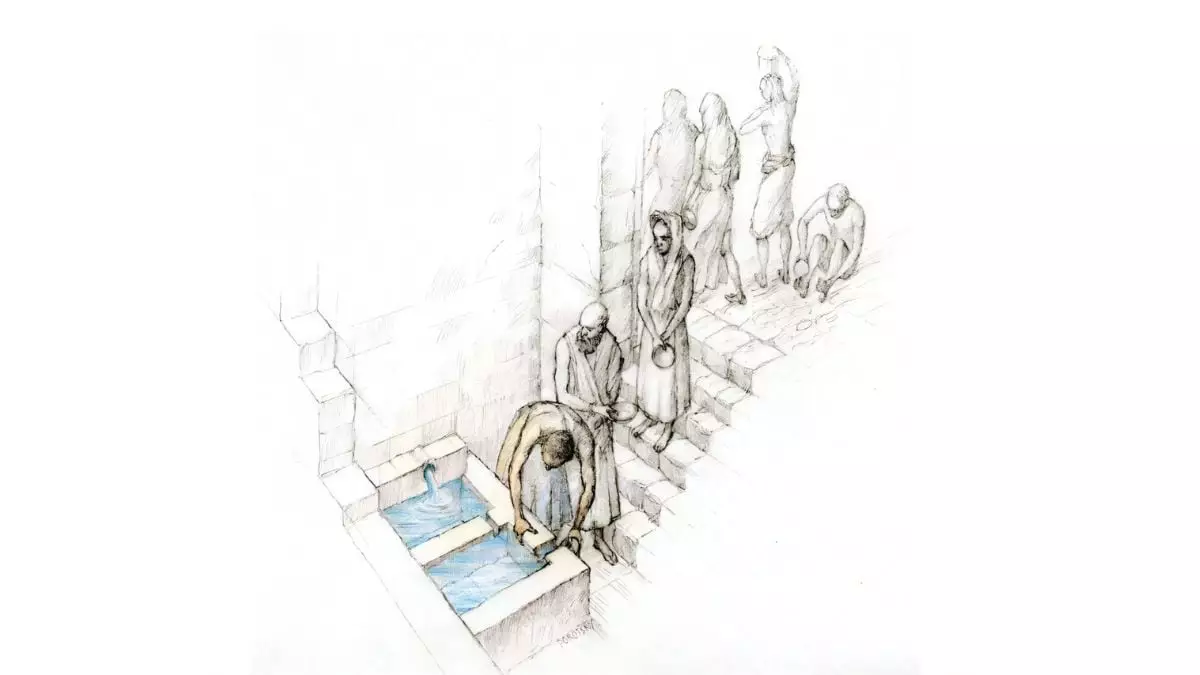In a world rapidly losing touch with its sacred past, the archaeological discovery in northern Israel serves as a jarring reminder of humanity’s enduring quest for spiritual connection through ritualistic practices. Far from being just another dusty relic unearthed from the earth, this remarkable find at a forgotten sanctuary unveils the nuanced layers of Near Eastern religious life, challenging us to reconsider how we view spirituality in antiquity. This ancient site, characterized by its unique bathing complex, compels a new evaluation of both religious and cultural dynamics during the biblical era.
Ritual Cleansing: A Window into the Sacred
The excavation revealed two distinct bathing areas, one plated in prestigious yellow plaster, and another adorned in calming blue plaster, signaling not merely functionality but a deep-seated reverence for ritual purity. These spaces undeniably highlight how water was integral to the ceremonial practices of the priestly class, inviting us to explore the complexities surrounding notions of cleanliness and divinity. Unlike conventional full-immersion baths, these cold-water basins suggest that worshippers engaged in cleansing rites with a sense of both humility and corporeal awareness.
This begs the question: how does the act of cleansing transform the spiritual experience? Herein lies a potent reflection—the ritual of washing symbolically renews the self, aligning the participants with a higher spiritual order, emphasizing the plight for connection not just to the deity, but to the community and the cosmos itself.
Relics of Devotion: An Interplay of Cultures
The discovery has catalyzed discussions among scholars and historians regarding the implications of multi-lingual inscriptions and imported ceramics found within the sanctuary. Such artifacts reveal a remarkable interplay of cultures and beliefs that transcended geographical and temporal boundaries. Israel’s historical tapestry is furrowed with layers of diverse faiths, and these latest findings challenge the often simplistic artistic depictions of ancient religious practices, suggesting a melting pot of spirituality rather than monolithic belief systems.
Dr. Levana Tsfania-Zias’s research argues convincingly that the sanctuary was not merely a place for local worship but likely a significant pilgrimage site. This fluidity of identity and the presence of diverse deities reflect a broader narrative of inclusion—the acknowledgment that spirituality transcends tribal barriers, which is perhaps one of the most liberating realizations we can glean today.
The Timeless Quest for Sacred Meaning
What resonates deeply is not just the architectural splendor or the richly decorated plaster, but the inherent human longing for connection to the divine. This excavation prompts a vital reassessment of how we relate to our past and thus influence our present. The rituals observed in ancient Israel reveal profound insights into the universal desire for meaning—a longing that remains valid in today’s increasingly complex spiritual landscape.
In a world facing existential challenges, from climate crises to social discord, perhaps what we need most are lessons from these ancient practices, insights illuminated by humility and a deep respect for ritual. Engaging with the past might very well be our most potent tool for fostering understanding and compassion in an age that often celebrates division over unity. The sanctuary at Tel Dan invites us to dive deeper, proving that history is not merely a series of events but a vibrant tapestry of human experience, rich with lessons waiting to be learned.



Leave a Reply